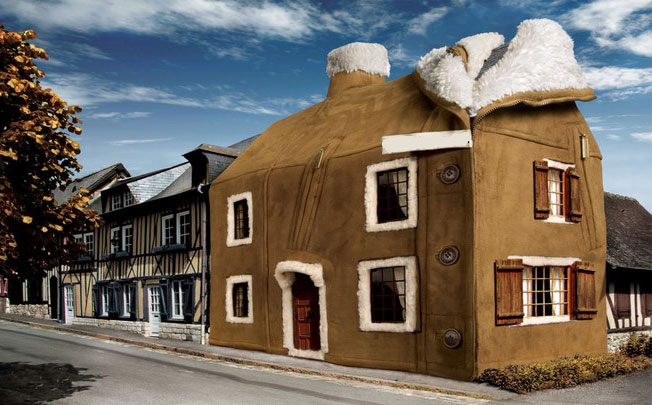For many years people have been struggling to solve a rather difficult issue.- how to keep the house warm in the cold season and cool in the warmth? Вместе с этим вопросом всегда решался и другой – как уменьшить расходы на отопление дома? We offer an overview of the most popular methods , technologies and materials for insulating private houses outside, pros and cons of different heaters.
Why is the house losing heat?
As known, heat loss from any room occurs in the following directions:
- To 43% heat goes through the walls of the house.
- To 13%- through the roof.
- To 6%- across the floor.
Since the heat loss through the walls is the greatest, we'll talk about them today.
so. What do you need, to reduce heat loss through walls? Ответ прост – их нужно утеплить. The better the walls are insulated and the better you carry out the insulation, the more heat will remain in your home. There are many different types of insulation. Let's sort everything out in order.
Traditional materials for insulation
These include polystyrene and glass wool.. As known, air is the best insulation. So the foam consists of 10% made of foamed plastic and on 90%- out of thin air. Пенопласт – это самый дешевый утеплитель из современных. An excellent choice for wall insulation, in case of foam, there will be flexible brick thermal panels. You can buy them on the page https://ecofasad.com.ua/gibkiy-klinker.html. This material allows you to save on wall insulation up to 60%!
Glass wool also has a high percentage of air in its composition., the second element of glass wool is glass, or rather glass industry waste. When using glass wool, you need to be careful and install insulation in a special suit and gloves.. Otherwise, small particles of glass will bring you a lot of unpleasant moments when exposed to non-open areas of the body.
Modern and technologically advanced materials for insulation
Progress does not stand still and the number of types of various heaters is constantly growing. From modern heaters, you can dwell on products such as:
- polyurethane foam;
- extruded polystyrene foam;
- mineral wool;
- basalt wool.
Interesting, what polyurethane foam Is a kind of regular foam in liquid form, this is a regular polyurethane foam. The foam hardens over time. Thanks to such a great property, as liquid phase of polyurethane foam, it is able to penetrate and clog the smallest gaps in the structure of the house, thereby eliminating possible cold bridges, which are difficult to prevent, if some other insulation is used.
Extruded polystyrene foam (EPS) - this is also a kind of foam. It is produced by extrusion of foaming agents at high pressure and temperature. This insulation has one remarkable property, которое выделяет его среди выше описанных – он не впитывает влагу. Due to this quality, this insulation is used more often when insulating the supporting structures of buildings.
Mineral wool made from various silicate materials, as well as slags and, in particular, metallurgical slag. Mineral wool has an advantage over ordinary glass wool due to the safety during installation and construction work when using mineral wool.
And finally, basalt wool - it is made from basalt rocks. The service life of such a heater reaches 40 years old. No mineral wool, no glass wool is able to maintain its physical and, special, теплофизические характеристики – низкую теплопроводность.
Each of the heaters listed above has its own advantages and disadvantages in comparison with others.. They must be taken into account when deciding whether, what exactly needs to be insulated, which section of the wall of the floor or roof of the house. In the table, which is listed below, we have collected all the characteristics of these heaters.